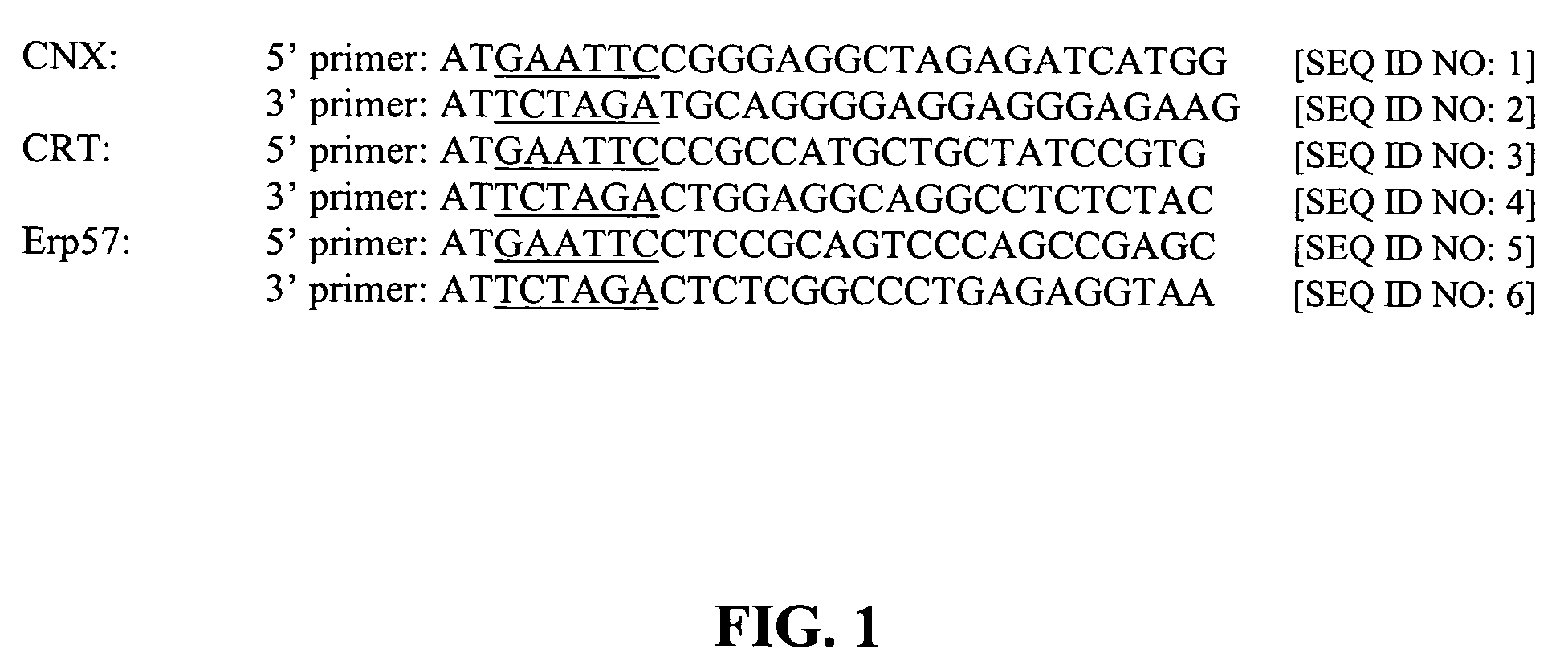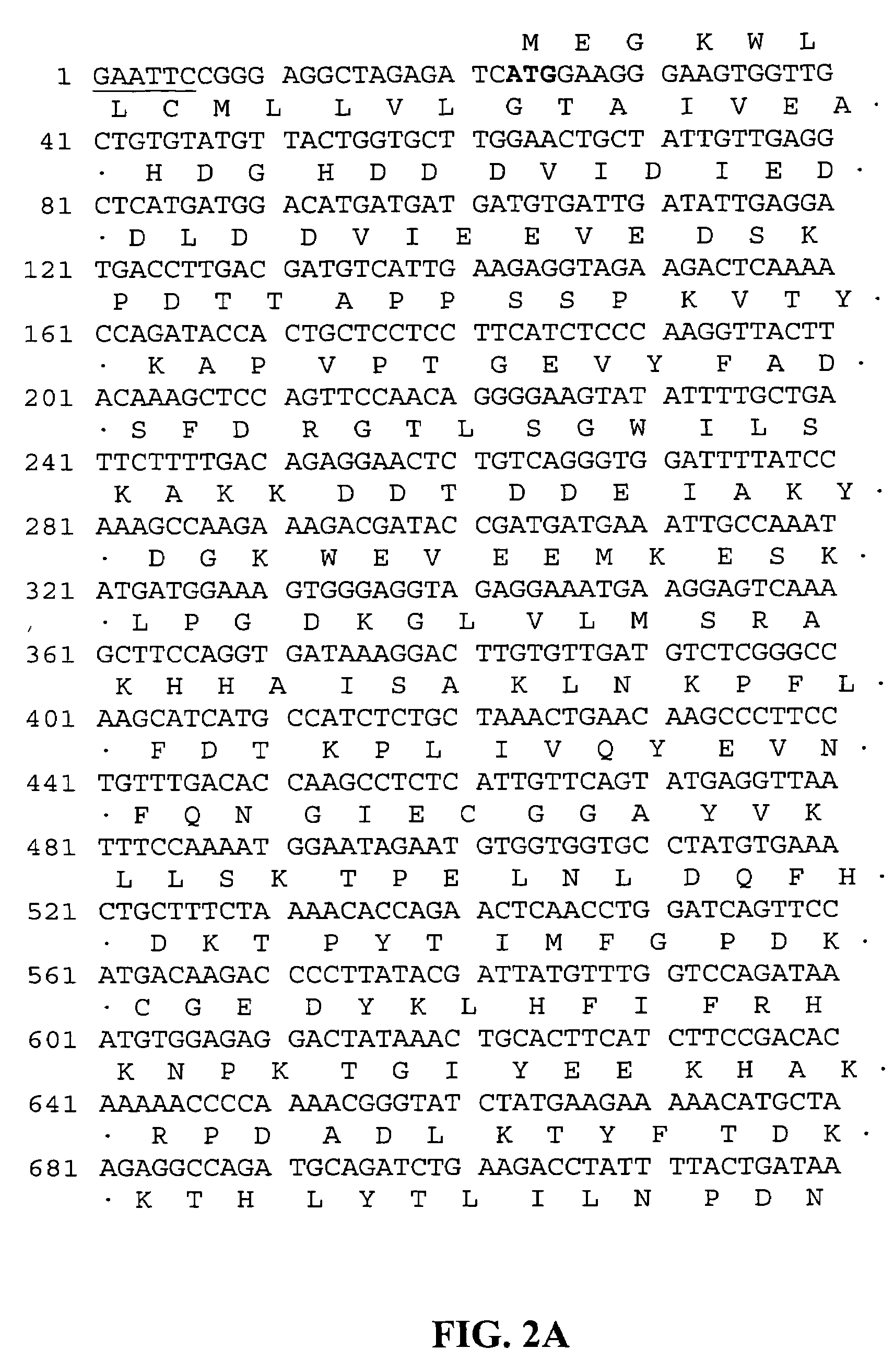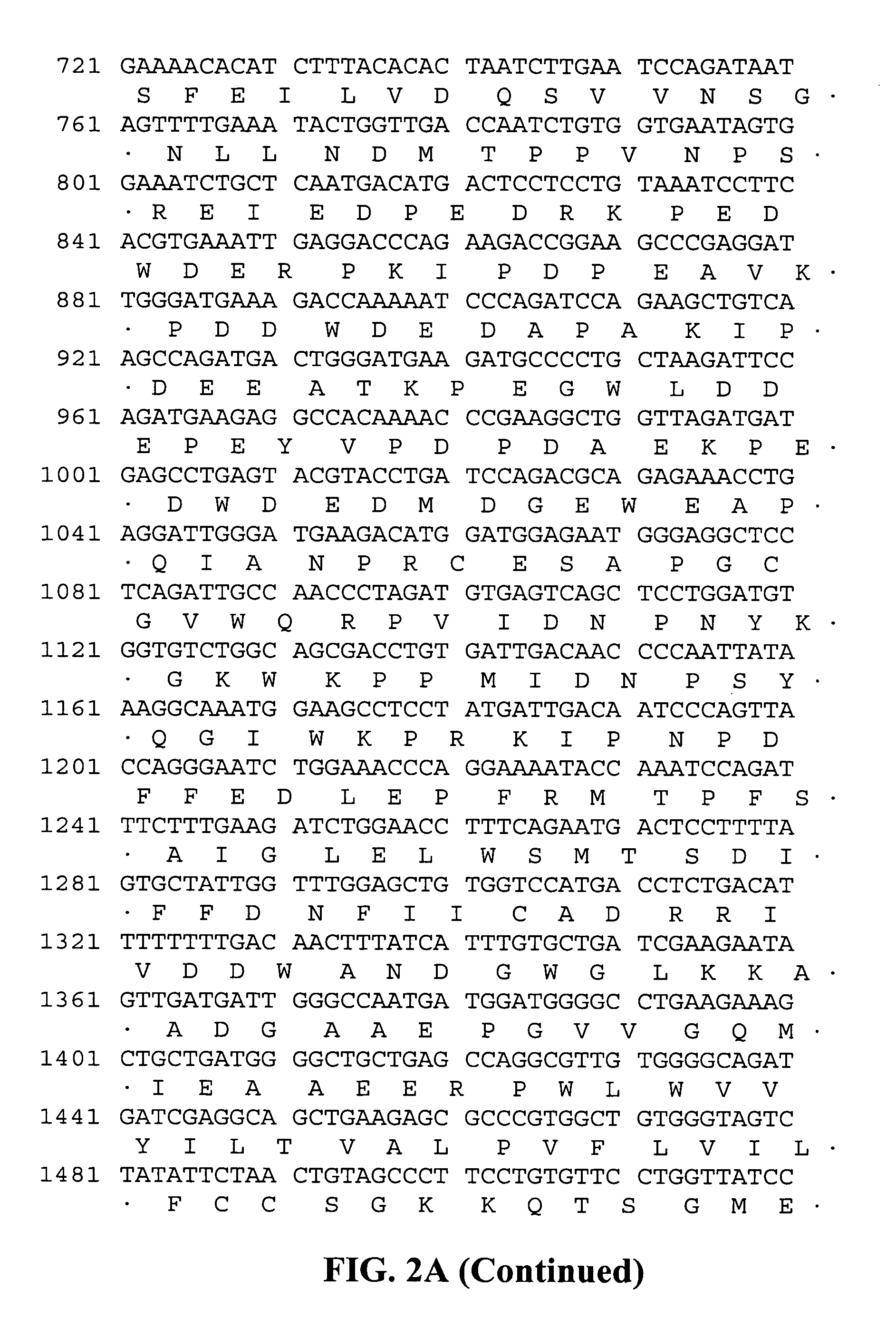Use of molecular chaperones for the enhanced production of secreted, recombinant proteins in mammalian cells
- Summary
- Abstract
- Description
- Claims
- Application Information
AI Technical Summary
Benefits of technology
Problems solved by technology
Method used
Image
Examples
example 1
Cloning of Chaperone cDNA
[0100]All chaperone sequences were cloned from human cDNA libraries followed by verification of the nucleotide sequences. DNA sequences representing the three ER chaperones were cloned by RT-PCR from a human cDNA library. The RT-PCR primers used in these reactions were designed to amplify the entire coding region using the appropriate sequences obtained from Genbank. Each pair of 5′ and 3′ primers include either an EcoRI (5′ primer) or XbaI (3′ primer) restriction site (FIG. 1) to facilitate cloning of the PCR product into the expression vector, pCI-neo (Promega).
[0101]The PCR reactions were performed using high fidelity PFU enzyme (Stratagene). Bands of the expected size were purified, digested with EcoRI and XbaI and cloned into the similarly digested pCI-neo vector. Recombinant vectors from this step were propagated in E. Coli followed by isolation and purification of the vector sequences. The sequence inserts representing the chaperones were sequenced us...
example 2
Bikunin Production is Increased in CHO Cells After Transfection of an ER Chaperone Such as Calnexin, Calreticulin, Erp57 or Hsp70.
[0103]A CHO cell line secreting the Bikunin recombinant protein (U.S. patent application Ser. No. 09 / 441,654, incorporated herein by reference) was super transfected with various combinations of the ER chaperones, calnexin (CNX), calreticulin (CRT), ERp57 or Hsp70 followed by selection with G418. Populations were obtained and screened by kallikrein assay (U.S. patent application Ser. No. 09 / 441,654, incorporated herein by reference). Briefly, bikunin standarts or culture fluid was serially diluted and incubated with an equal volume of kallikrein at 37° C. for 30 minutes, after which a chromogenic substrate, N-benzoyl-Pro-Phe-Arg-pNA [SEQ ID NO: 22], was added. The reaction was incubated for 15 minutes before the addition of 50% acetic acid. The amount of p-nitroanilide released was measured at 405 nM. Populations showing the highest Bikunin titers were th...
example 3
Recombinant Factor VIII Production is Increased in BHK Cells after Transfection with ER Chaperones
[0107]Stable Factor VIII producing cells (MWCB1) (U.S. Pat. No. 4,965,199; ATCC No. CRL 8544) were transfected with chaperone expression vectors in addition to pPUR, a vector containing puromycin-resistant gene, in a 10:1 ratio. Approximately 4×106 MWCB1 cells were transfected with a total of 5 μg of DNA using the DMRIE-C reagent and OPTI-MEM medium (Life Technology, MD) in 6-well plates. Three days post transfection, 100,000 cells were seeded in 6-well plates and then selected in the presence of 1-2 μg / ml puromycin with OPTI-MEM medium containing 2% FBS for 2 weeks. Puromycin resistant colonies were manually picked and seeded into 96 well plates and expanded without the presence of drug. Individual clonal populations were screened for Factor VIII production using a COATEST kit (Chromogenix, Italy) according to manufacturer's instructions. The high producing clones were sequentially ex...
PUM
 Login to View More
Login to View More Abstract
Description
Claims
Application Information
 Login to View More
Login to View More - R&D
- Intellectual Property
- Life Sciences
- Materials
- Tech Scout
- Unparalleled Data Quality
- Higher Quality Content
- 60% Fewer Hallucinations
Browse by: Latest US Patents, China's latest patents, Technical Efficacy Thesaurus, Application Domain, Technology Topic, Popular Technical Reports.
© 2025 PatSnap. All rights reserved.Legal|Privacy policy|Modern Slavery Act Transparency Statement|Sitemap|About US| Contact US: help@patsnap.com



